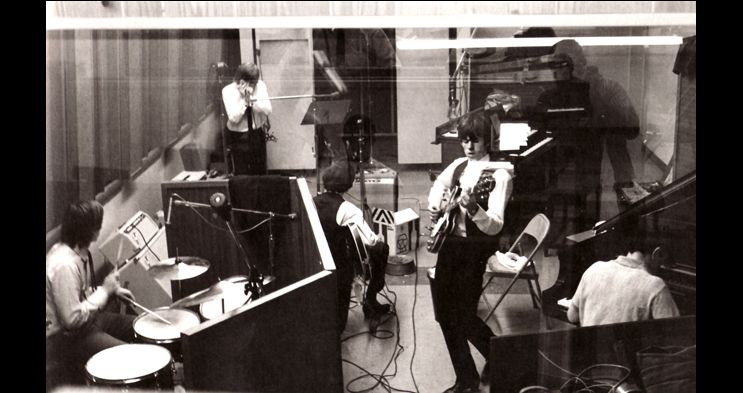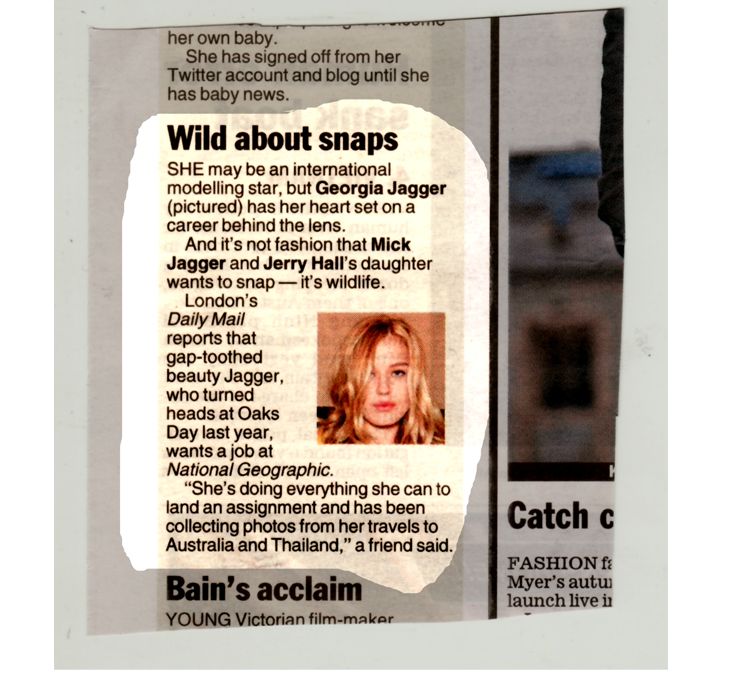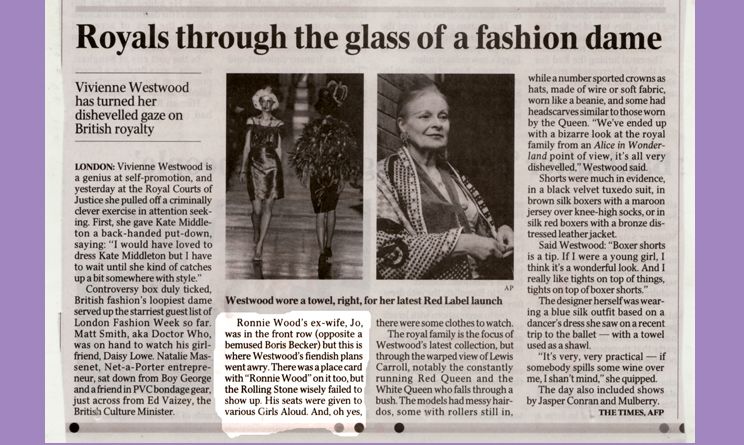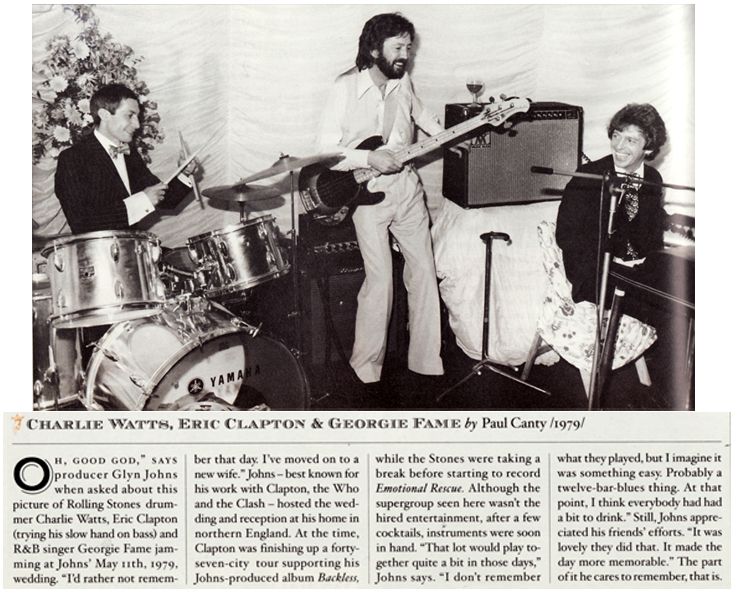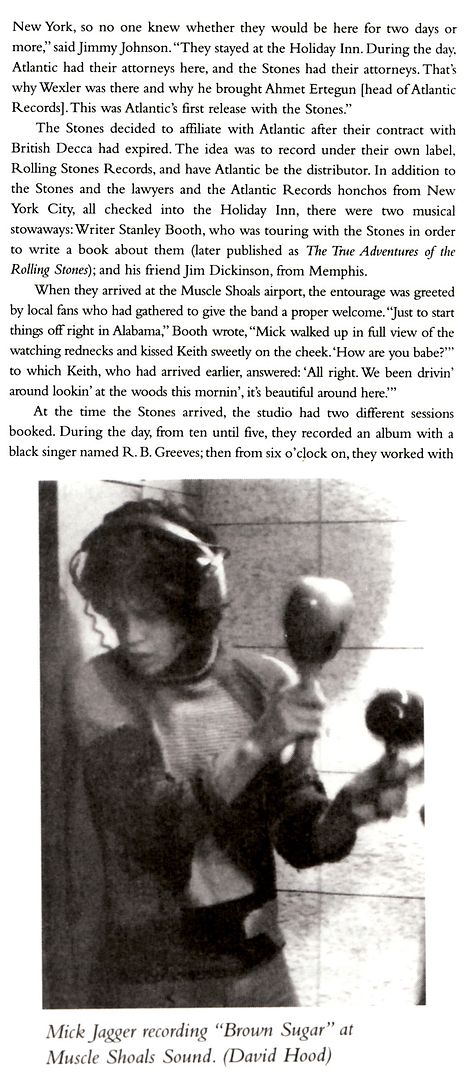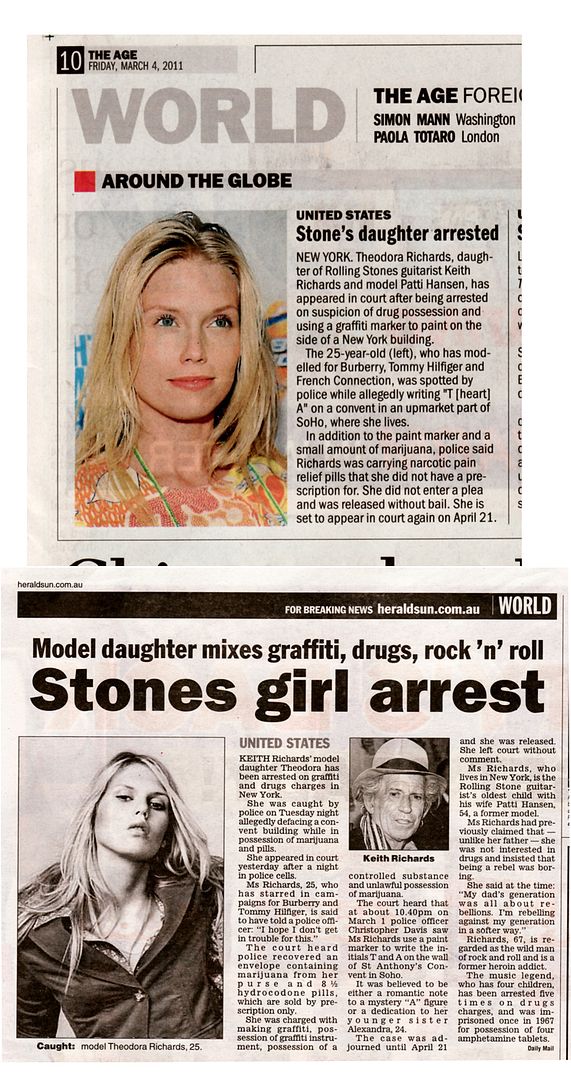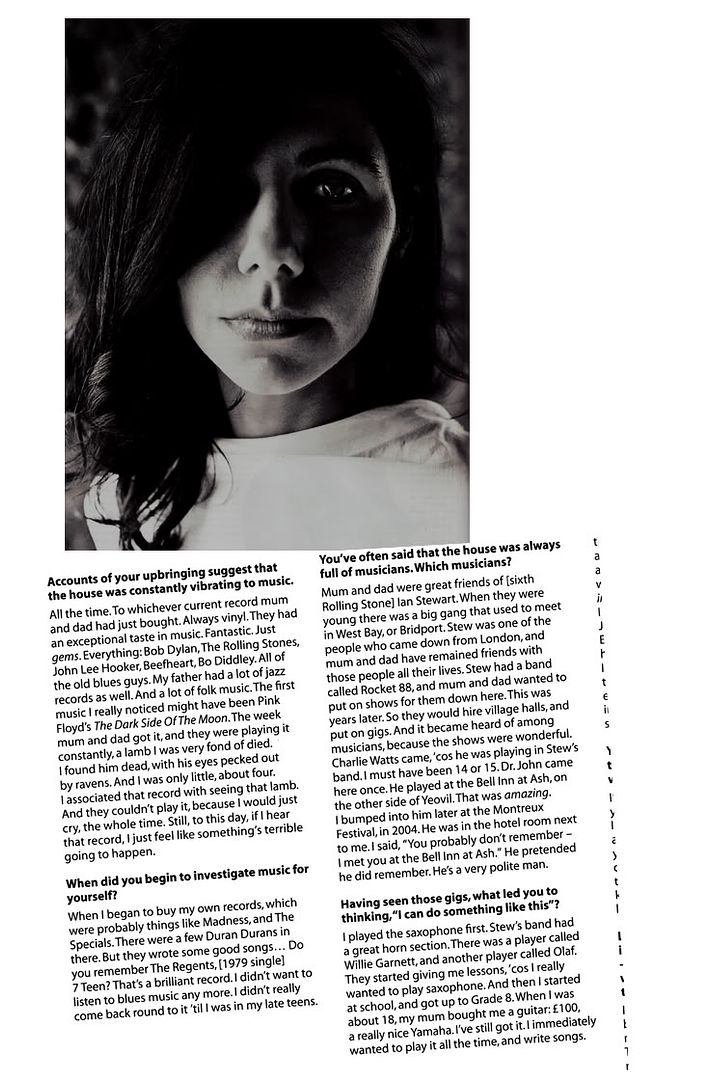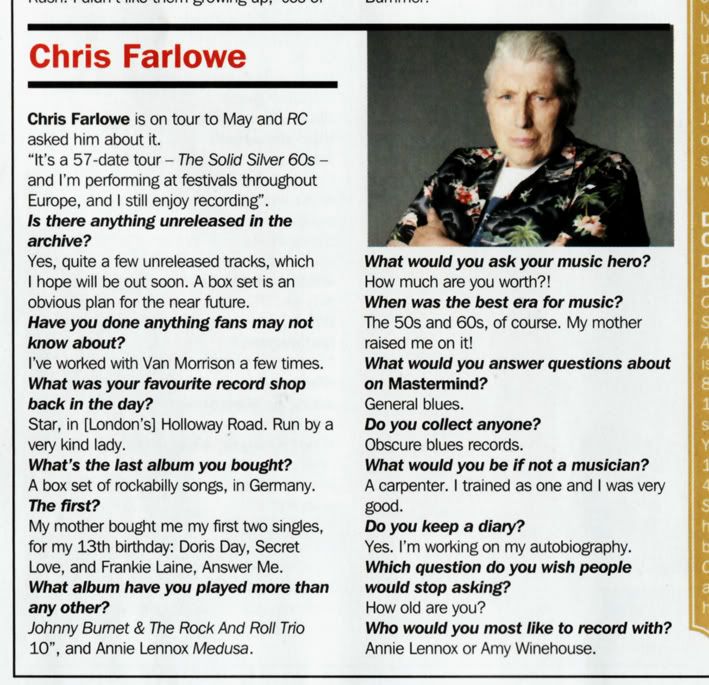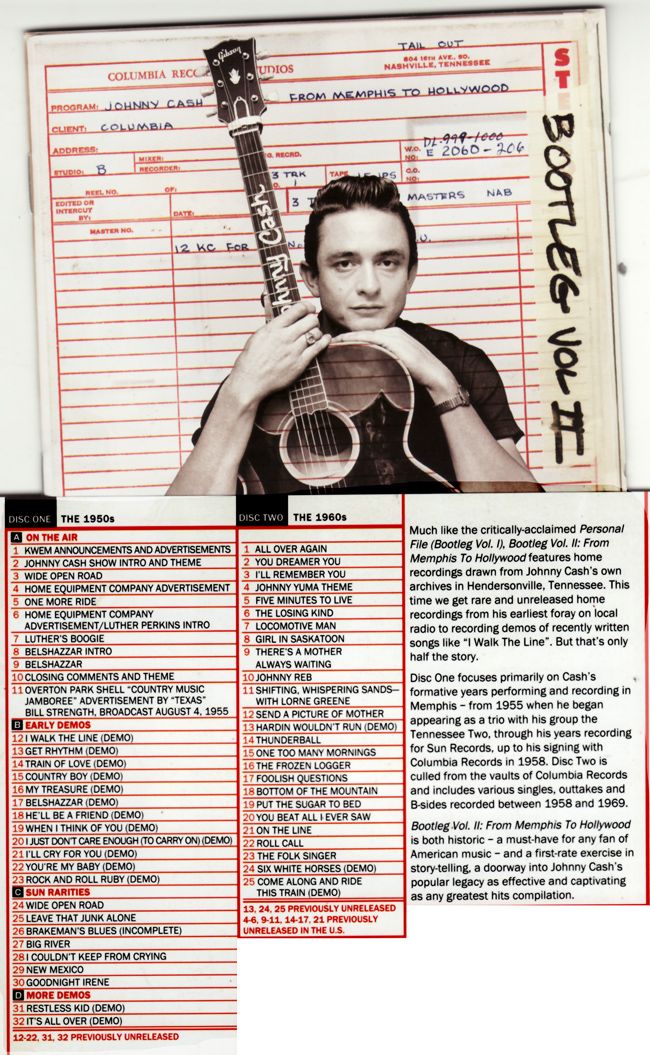Tell Me :
Talk

............... Max Romeo -- Lee Perry -- Black Ark Studio, Kingston - Jamaica 1976 ................... David Burnett

ROCKMAN
When I got the book, this photo quickly became one of my alltime favorite Stonespics.
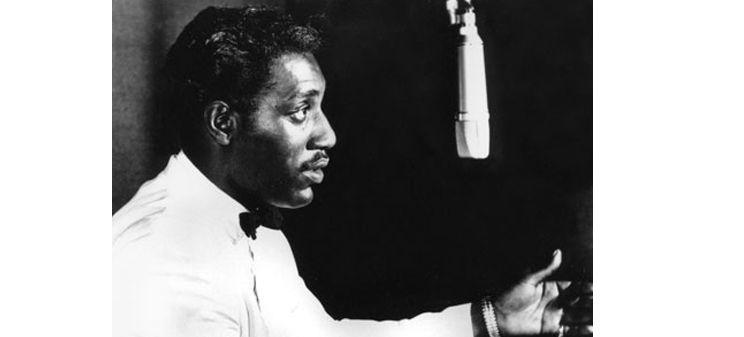
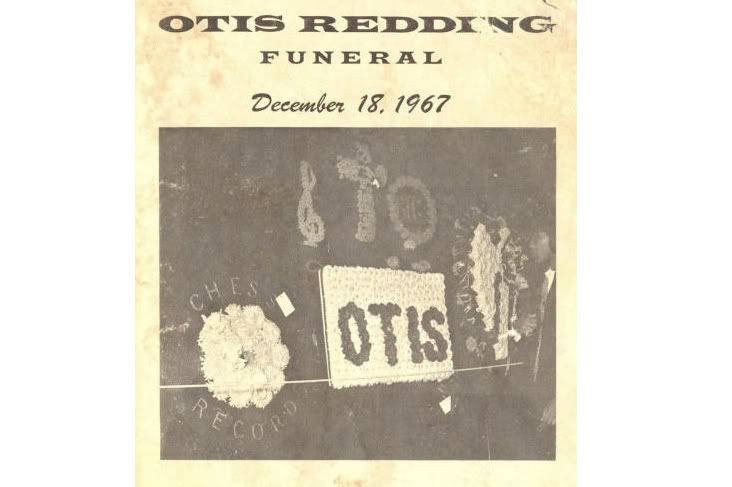
................................................................. [www.otisreddotis_funeral.htm]

ROCKMAN
The picture in the second news article (herald sun) is actually Alexandra.
I can tell them apart b/c Alex looks more like Patti and has fuller lips.
Theo has Marlon's and Keith's jawline, but she doesn't have the cro-magnon forehead that Alex has.
yep, and they got the Glimmer Twins mixed up in the last paragraph as well -
the Department of Historical Accuracy is rolling its eyes :E
Talk about your favorite band.
For information about how to use this forum please check out forum help and policies.
Re: Some Kinda Stones Connections
Posted by:
stones78
()
Date: February 17, 2011 22:58
Wow, fantastic photo! Thanks a lot.
Re: Some Kinda Stones Connections
Posted by:
Rockman
()
Date: February 18, 2011 07:52

............... Max Romeo -- Lee Perry -- Black Ark Studio, Kingston - Jamaica 1976 ................... David Burnett

ROCKMAN
Re: Some Kinda Stones Connections
Posted by:
Come On
()
Date: February 19, 2011 00:05
Huh! The world is getting smaller...
2 1 2 0
2 1 2 0
Re: Some Kinda Stones Connections
Posted by:
Palace Revolution 2000
()
Date: February 21, 2011 00:40
Quote
Rockman
............ The Rolling Stones - Chess Studio Chicago 1964 ---------------------- Bob Bonis
When I got the book, this photo quickly became one of my alltime favorite Stonespics.
Re: Some Kinda Stones Connections
Posted by:
jean pierre M
()
Date: February 21, 2011 01:31
....forteen greats songs recorded in two days..!!!!!!
Re: Some Kinda Stones Connections
Posted by:
sweet things
()
Date: February 24, 2011 18:26
thanks for the MOJO snippets
Re: Some Kinda Stones Connections
Posted by:
Come On
()
Date: February 26, 2011 23:36
Skip has a real intressting tuning on his guitar...open B (for Blues) with 6 strings...

2 1 2 0

2 1 2 0
Re: Some Kinda Stones Connections
Posted by:
Rockman
()
Date: February 27, 2011 05:40


................................................................. [www.otisreddotis_funeral.htm]

ROCKMAN
Re: Some Kinda Stones Connections
Posted by:
Edith Grove
()
Date: February 27, 2011 19:31
DR. JOHN: A MAC FOR ALL SEASONS
01 March 2011 — by John Swenson
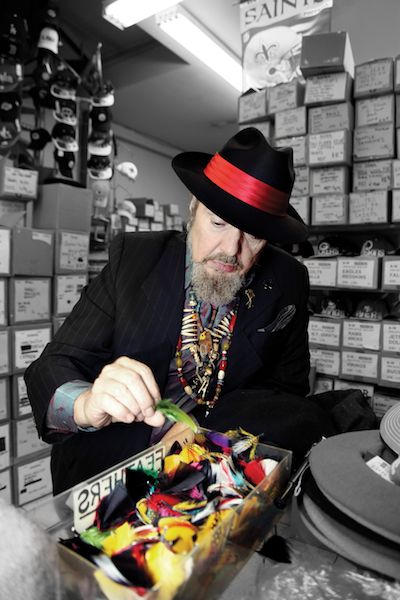
Dr. John’s induction into the Rock and Roll Hall of Fame shows how far he’s come from the time when manager Albert Grossman threatened to destroy his career, or when another manager tried to feed him to his pet piranhas, two of the many delightful tales from his 1994 no-holds-barred autobiography Under a Hoodoo Moon. Overcoming threats from such powerful forces is the stuff of which legends are made, but Dr. John’s road to the pop pantheon has been a particularly unlikely journey. His selection reflects the Rock Hall’s idiosyncrasies as well as its litany of real and imagined injustices, but the irony of his inclusion is that Malcolm (Mac) Rebennack performed most of his hardcore rock ’n’ roll ministrations well before he took on the alter ego of Dr. John in 1967. Since then, Dr. John has won and been nominated for numerous Grammy awards as a blues and jazz artist and is a perennial nominee for local awards in New Orleans as an R&B and blues artist, but is seldom put into the “rock” category when it comes to such honors. He did win a Grammy along with Stevie Ray Vaughan for Best Rock Instrumental, and has two albums in Rolling Stone’s list of the 500 best albums, honors which obviously qualify him for induction into the Rock Hall, which will take place March 14 at the Waldorf Astoria in New York City, where John Legend will give his induction speech.
But even if his selection stirs up debate about who really belongs, that controversy is the ultimate test of a good Hall of Fame. Who’s in and who’s not should stir healthy debate and a close inspection of the past. The Hall itself pretty much admits that it’s impossible to come up with a complete definition of what constitutes rock ’n’ roll, or even what the first rock ’n’ roll record was. So Mac’s inclusion offers us an opportunity to explore rock’s roots in New Orleans and its connections to blues and jazz. It also focuses attention on the intangibles of a career that is less about the qualities of celebrity and self-promotion common to most rock stars than about the ability to work with an astonishing range of people as a band leader, sideman and songwriter with the overview of a shrewd historian.
Mac began what is shaping up as his Awards Year by attending the Best of the Beat at Generations Hall, where he took away a pair of blues awards, including Best Blues Album for his latest release, Tribal. But his main motivation for attending the event wasn’t his own awards; Mac was eager to see the tribute to an old friend, Dave Bartholomew.
“I was glad to see Dave get honerated,” he says, “and I was very happy for (Trombone) Shorty.
“I learned a lot of shit from Dave just by watching him, the way he handled everything. When I first started working, I worked with Paul Gayten a lot on sessions. But Dave was always the one who had a different way of explaining bidness. He would throw me out of the studio. Me, [James] Booker, anybody else who was hanging around the studio when Dave was cutting, he’d throw us out ’cause it was about bidness with Dave. I always looked up to Dave. I thought he was the greatest blues trumpet player I ever heard, no matter what my father thought. My father was a very opinionated guy about musicians. I think a lot of people from New Orleans were very opinionated about musicians.
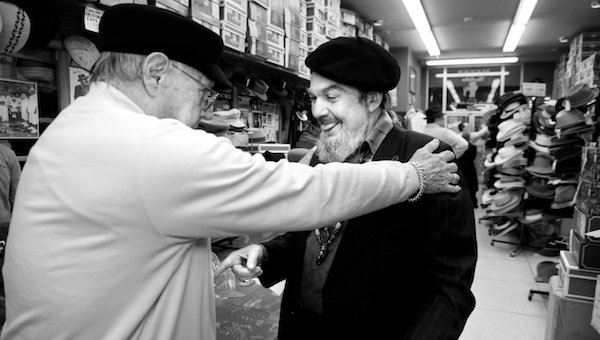
“The first recording session I was on when I was a little kid—I don’t remember the song, but I think Earl Palmer was playing drums, Herbert Hardesty was playing tenor, Red Tyler was playing baritone. What I mostly remember about the whole session was that Dave Bartholomew, who was producing the session, came into the room with the musicians, and on the last chord he hit a note to fatten the last chord of the song. I was so impressed with that. It was more than his arrangement; it was his production sense to fatten up the last chord of the song. It made a big statement in my head. I listened to records, but I didn’t know about playing music then.”
At the Best of the Beat, a video tribute to Bartholomew included the premise that Fats Domino’s first hit, the Bartholomew-produced “The Fat Man,” could have been the first rock ’n’ roll song. In his capacity as a music historian, Mac is fond of demonstrating how “The Fat Man” is a duplication of the piano structure of Champion Jack Dupree’s “Junker’s Blues.” He also points out that “Junker’s Blues” was the basis of Lloyd Price’s “Lawdy Miss Clawdy” and Professor Longhair’s “Tipitina.” Does that mean he thinks Champion Jack Dupree invented rock ’n’ roll?
“You’ve got to give props to Champion Jack Dupree for a lot of things,” says Mac, laughing. “Champion Jack, he’s not the greatest piano player, but he obviously influenced a lot of Ninth Ward people. He was such a char-actor. I was on the road with Champion Jack with Chris Barber and them in Europe a long time ago. Champion Jack used to sell these paintings he did of little stick people for 200 deutschmarks. I loved the guy. When I was a kid, he was on Larry McKinley’s show at WMRY studio on Tulane Avenue; I was so excited, I waited for hours outside the studio until he came out and I said to him something like, ‘I want to be a musician like you.’
“He was so cool. ‘Junker’s Blues’ was always one of my favorites. There was a lot of bits from Champion Jack songs that was ripped from spo-dee-oh-dee bits in the minstrel shows, like ‘Drunk Again,’
that was one of them. ‘That’s My Fault’ was another. ‘She Cooks Me Cabbage.’ He knew how to make them into really good songs; that was his talent. I always thought ‘Good Rockin’ Tonight’ by Roy Brown (1947) was the first rock ’n’ roll song, but who the hell knows. But if you’re going to say Antoine doing ‘The Fat Man’ was where rock ’n’ roll starts, you should give props to Champion Jack.”
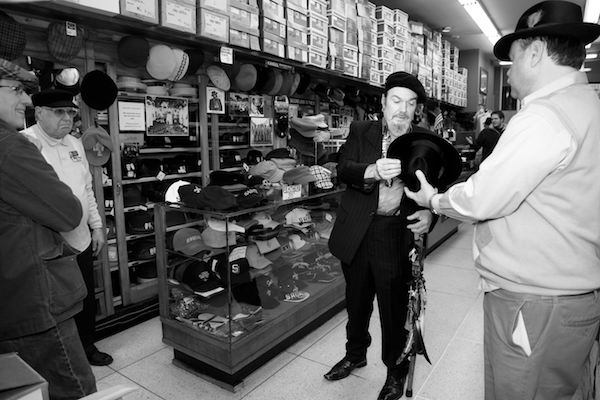
Like so many other New Orleans musicians, the young Rebennack learned about music from his family. His grandfather, who’d been involved with minstrel shows in the early 20th Century, sat with him on the porch and sang songs that Mac later recorded as Dr. John, songs such as “I’ve Been Hoodood” and “Jump Sturdy.”
His Aunt Andre taught him how to play “Pinetop’s Boogie Woogie” on the piano. The family had gatherings where his aunts would sing jazz songs from the late 1920s and ’30s, including “Everybody Loves My Baby,” recorded by Louis Armstrong, the Boswell Sisters and others. So Mac listened to early jazz music as a kid along with the boogie-woogie pianists his Aunt Andre taught him about, along with the records and musicians he met when he went with his dad to local bars and clubs to fix record players and sound systems. That’s how Mac first met Professor Longhair, who would become a close friend over the years, and Walter “Papoose” Nelson, who played guitar with Fess and with Fats Domino’s band.
“I met Papoose at the Cadillac Club on Poland Avenue out in the Ninth Ward,” Mac recalls. “I first met Fess when my pa was fixing the system at the Pepper Pot on the West Bank. My father would always tell me to wait in the car. I remember seeing him walk out, twisting up a joint, and then the next thing I knew Fess was hanging out, telling me stories. He had a hip name for everything; he talked in his own language. And even though he was the greatest piano player, he lived to play cards. One time he showed me his secret; he had a contraption up his sleeve with cards in it. I said, ‘What happens if they catch you with this?’ He just laughed.”
Papoose became one of Rebennack’s guitar teachers and eventually got him started in the music business when he arranged to have him cover a Paul Gayten session he couldn’t make.
“Papoose was the first guy to send me to sub for him on a session,” he says, “which shows you how little sessions paid back in that day. Twenty-two, twenty-three dollars or something. Papoose had something going that was paying better, so he’d send me, which pissed Paul Gayten off. He thought I was so influenced by T-Bone Walker, he started callin’ me Li’l Bone, which he called me until the day he died.
“I did love T-Bone. I got to work on T-Bone’s gig out in California. I was playing piano on the gig, but because T-Bone’s ar-thur-itis was hurting so bad, on the last set I would play those big chords and let T-Bone just play the fills.”
Rebennack’s dad was good friends with Cosimo Matassa, who ran J&M Studios, so he got a chance to spend time there even when he wasn’t playing sessions. But it wasn’t long before the precocious teenager was playing all kinds of music as a guitarist and keyboardist, and producing sessions, including the classic Professor Longhair recording “Mardi Gras in New Orleans,” which they cut under the title “Go to the Mardi Gras.”
“The proudest thing I ever done in my life was produce that record,” says Mac. “Fess just sat down and he said, ‘It goes like this.’ The thing was, he played it like a drummer. All those guys used to do that. Champion Jack used to do that too. Fess was a dancer before he was a piano player, and I think dancers make great drummers. Earl Palmer, who was a dancer, was proof of that to the max.
“It was a big thing. We was working at Lincoln Beach. Fess offered us one gig, which he never did. So while we were rehearsing, we were able to cut the record. He made the new arrangement of ‘Mardi Gras in New Orleans’ while we was rehearsing. There weren’t a whole lot of sessions that I remember who was on the date, but I remember that one.
“Some sessions, I had no idea what we did. Guys would come down from Memphis, Nashville. The sessions were always booked. Booker was hanging out before, during and after the sessions. A lot of stuff Booker was playing was killing me. Aunt Andre, who taught me how to play piano, she was very connected to something that the only other persons I ever heard do that style was James Booker and Roy Zimmerman. It was called butterfly stride, and they all knew it by that name. I never knew anybody else that played that style. Booker had an extra trick that he did in that style. ‘Course, he had a trick for everything.”
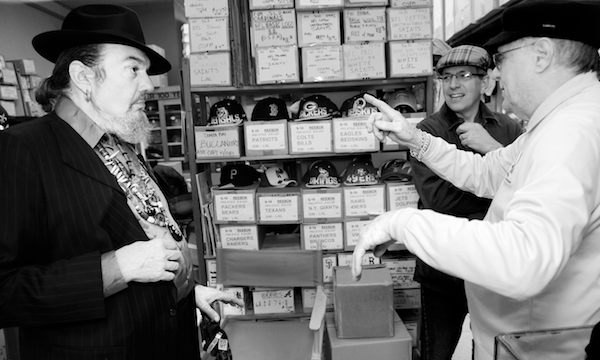
Rebennack’s early days were a riot of sessions and live gigs around New Orleans and the Southern circuit. He lost his fretting finger to a gunshot wound in a fight, forcing him to play bass in a Dixieland band until James Booker taught him to play Hammond B-3 organ. He partied even harder than he played, and eventually found himself banished from the hometown that nurtured him. After a stint in a Texas prison, Mac relocated to Los Angeles in 1965, where a group of expatriate New Orleans musicians, including the brilliant saxophonist and arranger Harold Battiste, stamped their mark on the local session scene. They played on many of the city’s highest profile gigs, including tracks for Phil Spector, and created the lush harmonies and baroque melodic embellishments of the Sonny and Cher hits.
Rebennack fit right into this scene, playing on sessions as varied as the Monkees and Frank Zappa’s Freak Out. Meanwhile, he partnered up with some of his old running buddies as a production team that could write the songs, play the sessions and hopefully publish and release the music.
“Out in L.A., I hooked up with Jessie Hill, Alvin ‘Shine’ Robinson and Dave Dixon. Me and Jessie had a publishing company together. It had an unfortunate name for a record company; we put out a couple of records on what we called Free Records, which is what we were able to sell them for. We wrote a ton of stuff.”
They also had a very unusual band powered by an amazing conga player called Didimus, an Ethiopian Cuban whose given name was Richard Washington. Mac had always been fascinated with the vodou spiritual tradition brought to New Orleans from Haiti and wanted to write an album dedicated to the vodou spiritual mothers who were leaders of their communities back in New Orleans. Given all the different directions his music had taken and the myriad music business hustles he’d been involved in, it seems like a miracle that Rebennack was able to take his group into the studio and, during unused Sonny and Cher session time, record the superbly focused Gris-Gris, the album that introduced Dr. John. Mac was never the front man on his sessions, and the role of Dr. John was to be performed by the vocalist in Mac’s band, Ronnie Barron. But fate played its hand; no one but Mac Rebennack himself could have assumed the role of Dr. John so completely.

“At the time I was very concerned about a lot of the Reverend Mothers in New Orleans passing away and certain people trying to pull strings to take over,” Mac explains. “In those days, people cared about people. It was a different world. If you look at Frank Lastie, the whole Lastie family, or you look at the Hills, on and on, there was a difference.
“With Gris-Gris, I asked a lot of people in New Orleans what do you think of me doing something like this? I basically got a go-ahead about how to do it without really pissing them off. What I was always angling at was that I would be the producer of it. I never thought about being a front man. I’ve only ever seen two front men that I thought did it the best—Joe Tex and Marvin Gaye—and I still say that ’til this day. They represented something different. Ronnie Barron was going to do it, but we had gotten him a management deal with Don Costa and Don Costa said he’d rather see him do something like Curtis Mayfield and the Impressions. But I never got this “like somebody” bidness. The best thing you can do is be “like” yourself. Didimus, our conga player, encouraged me to go ahead and do it.”
So Mac became “Dr. John,” Jessie Hill became “Dr. Poo Pah Doo,” and the otherwordly exploration of the Night Tripper began in earnest.
“When we had Kalinda as our dancer, we got busted in St. Louis for having a lewd and lascivious performance. When we would go into a place and have the band all painted up with body paint and dancing with the snake, that was our show, but it was also real. When Prince Kiyama came on the road with us, it was biting the heads off of chickens, and throwing it with the black snake into the hat. People saw the chicken disappear and thought it was a show, but that’s what went on for real in Prince Kiyama’s church.”
As improbable as the Dr. John Gris-Gris manifestations might have seemed to the outside world, Mac himself thought he might have gone too far. He came up with a brilliant scheme to end the Dr. John phase of his career with a bang. The follow-up album to Gris-Gris, Babylon, would be about the end of the world.
“I was thinking I could get out of being a front man maybe if I made a record so strange that Atlantic Records might drop me,” he laughs.
But Babylon, a great songwriting and arrangement collaboration between Rebennack and Harold Battiste, became representative of the apocalyptic world view that accompanied the turbulent events of 1968. “Somebody told me that the song ‘Patriotic Flag Waver’ was played at both the Republican and Democratic conventions in ’68,” says Mac.
So Mac Rebennack kept the unlikely mantle of Dr. John, moving through such triumphs as Gumbo and In the Right Place and the string of albums leading up to last year’s Tribal. When it comes to playing rock, jazz, blues or R&B, Dr. John sets a completely unique standard. As an American musician, he is a Hall-of-Famer for all seasons.
[www.offbeat.com]

01 March 2011 — by John Swenson

Dr. John’s induction into the Rock and Roll Hall of Fame shows how far he’s come from the time when manager Albert Grossman threatened to destroy his career, or when another manager tried to feed him to his pet piranhas, two of the many delightful tales from his 1994 no-holds-barred autobiography Under a Hoodoo Moon. Overcoming threats from such powerful forces is the stuff of which legends are made, but Dr. John’s road to the pop pantheon has been a particularly unlikely journey. His selection reflects the Rock Hall’s idiosyncrasies as well as its litany of real and imagined injustices, but the irony of his inclusion is that Malcolm (Mac) Rebennack performed most of his hardcore rock ’n’ roll ministrations well before he took on the alter ego of Dr. John in 1967. Since then, Dr. John has won and been nominated for numerous Grammy awards as a blues and jazz artist and is a perennial nominee for local awards in New Orleans as an R&B and blues artist, but is seldom put into the “rock” category when it comes to such honors. He did win a Grammy along with Stevie Ray Vaughan for Best Rock Instrumental, and has two albums in Rolling Stone’s list of the 500 best albums, honors which obviously qualify him for induction into the Rock Hall, which will take place March 14 at the Waldorf Astoria in New York City, where John Legend will give his induction speech.
But even if his selection stirs up debate about who really belongs, that controversy is the ultimate test of a good Hall of Fame. Who’s in and who’s not should stir healthy debate and a close inspection of the past. The Hall itself pretty much admits that it’s impossible to come up with a complete definition of what constitutes rock ’n’ roll, or even what the first rock ’n’ roll record was. So Mac’s inclusion offers us an opportunity to explore rock’s roots in New Orleans and its connections to blues and jazz. It also focuses attention on the intangibles of a career that is less about the qualities of celebrity and self-promotion common to most rock stars than about the ability to work with an astonishing range of people as a band leader, sideman and songwriter with the overview of a shrewd historian.
Mac began what is shaping up as his Awards Year by attending the Best of the Beat at Generations Hall, where he took away a pair of blues awards, including Best Blues Album for his latest release, Tribal. But his main motivation for attending the event wasn’t his own awards; Mac was eager to see the tribute to an old friend, Dave Bartholomew.
“I was glad to see Dave get honerated,” he says, “and I was very happy for (Trombone) Shorty.
“I learned a lot of shit from Dave just by watching him, the way he handled everything. When I first started working, I worked with Paul Gayten a lot on sessions. But Dave was always the one who had a different way of explaining bidness. He would throw me out of the studio. Me, [James] Booker, anybody else who was hanging around the studio when Dave was cutting, he’d throw us out ’cause it was about bidness with Dave. I always looked up to Dave. I thought he was the greatest blues trumpet player I ever heard, no matter what my father thought. My father was a very opinionated guy about musicians. I think a lot of people from New Orleans were very opinionated about musicians.

“The first recording session I was on when I was a little kid—I don’t remember the song, but I think Earl Palmer was playing drums, Herbert Hardesty was playing tenor, Red Tyler was playing baritone. What I mostly remember about the whole session was that Dave Bartholomew, who was producing the session, came into the room with the musicians, and on the last chord he hit a note to fatten the last chord of the song. I was so impressed with that. It was more than his arrangement; it was his production sense to fatten up the last chord of the song. It made a big statement in my head. I listened to records, but I didn’t know about playing music then.”
At the Best of the Beat, a video tribute to Bartholomew included the premise that Fats Domino’s first hit, the Bartholomew-produced “The Fat Man,” could have been the first rock ’n’ roll song. In his capacity as a music historian, Mac is fond of demonstrating how “The Fat Man” is a duplication of the piano structure of Champion Jack Dupree’s “Junker’s Blues.” He also points out that “Junker’s Blues” was the basis of Lloyd Price’s “Lawdy Miss Clawdy” and Professor Longhair’s “Tipitina.” Does that mean he thinks Champion Jack Dupree invented rock ’n’ roll?
“You’ve got to give props to Champion Jack Dupree for a lot of things,” says Mac, laughing. “Champion Jack, he’s not the greatest piano player, but he obviously influenced a lot of Ninth Ward people. He was such a char-actor. I was on the road with Champion Jack with Chris Barber and them in Europe a long time ago. Champion Jack used to sell these paintings he did of little stick people for 200 deutschmarks. I loved the guy. When I was a kid, he was on Larry McKinley’s show at WMRY studio on Tulane Avenue; I was so excited, I waited for hours outside the studio until he came out and I said to him something like, ‘I want to be a musician like you.’
“He was so cool. ‘Junker’s Blues’ was always one of my favorites. There was a lot of bits from Champion Jack songs that was ripped from spo-dee-oh-dee bits in the minstrel shows, like ‘Drunk Again,’
that was one of them. ‘That’s My Fault’ was another. ‘She Cooks Me Cabbage.’ He knew how to make them into really good songs; that was his talent. I always thought ‘Good Rockin’ Tonight’ by Roy Brown (1947) was the first rock ’n’ roll song, but who the hell knows. But if you’re going to say Antoine doing ‘The Fat Man’ was where rock ’n’ roll starts, you should give props to Champion Jack.”

Like so many other New Orleans musicians, the young Rebennack learned about music from his family. His grandfather, who’d been involved with minstrel shows in the early 20th Century, sat with him on the porch and sang songs that Mac later recorded as Dr. John, songs such as “I’ve Been Hoodood” and “Jump Sturdy.”
His Aunt Andre taught him how to play “Pinetop’s Boogie Woogie” on the piano. The family had gatherings where his aunts would sing jazz songs from the late 1920s and ’30s, including “Everybody Loves My Baby,” recorded by Louis Armstrong, the Boswell Sisters and others. So Mac listened to early jazz music as a kid along with the boogie-woogie pianists his Aunt Andre taught him about, along with the records and musicians he met when he went with his dad to local bars and clubs to fix record players and sound systems. That’s how Mac first met Professor Longhair, who would become a close friend over the years, and Walter “Papoose” Nelson, who played guitar with Fess and with Fats Domino’s band.
“I met Papoose at the Cadillac Club on Poland Avenue out in the Ninth Ward,” Mac recalls. “I first met Fess when my pa was fixing the system at the Pepper Pot on the West Bank. My father would always tell me to wait in the car. I remember seeing him walk out, twisting up a joint, and then the next thing I knew Fess was hanging out, telling me stories. He had a hip name for everything; he talked in his own language. And even though he was the greatest piano player, he lived to play cards. One time he showed me his secret; he had a contraption up his sleeve with cards in it. I said, ‘What happens if they catch you with this?’ He just laughed.”
Papoose became one of Rebennack’s guitar teachers and eventually got him started in the music business when he arranged to have him cover a Paul Gayten session he couldn’t make.
“Papoose was the first guy to send me to sub for him on a session,” he says, “which shows you how little sessions paid back in that day. Twenty-two, twenty-three dollars or something. Papoose had something going that was paying better, so he’d send me, which pissed Paul Gayten off. He thought I was so influenced by T-Bone Walker, he started callin’ me Li’l Bone, which he called me until the day he died.
“I did love T-Bone. I got to work on T-Bone’s gig out in California. I was playing piano on the gig, but because T-Bone’s ar-thur-itis was hurting so bad, on the last set I would play those big chords and let T-Bone just play the fills.”
Rebennack’s dad was good friends with Cosimo Matassa, who ran J&M Studios, so he got a chance to spend time there even when he wasn’t playing sessions. But it wasn’t long before the precocious teenager was playing all kinds of music as a guitarist and keyboardist, and producing sessions, including the classic Professor Longhair recording “Mardi Gras in New Orleans,” which they cut under the title “Go to the Mardi Gras.”
“The proudest thing I ever done in my life was produce that record,” says Mac. “Fess just sat down and he said, ‘It goes like this.’ The thing was, he played it like a drummer. All those guys used to do that. Champion Jack used to do that too. Fess was a dancer before he was a piano player, and I think dancers make great drummers. Earl Palmer, who was a dancer, was proof of that to the max.
“It was a big thing. We was working at Lincoln Beach. Fess offered us one gig, which he never did. So while we were rehearsing, we were able to cut the record. He made the new arrangement of ‘Mardi Gras in New Orleans’ while we was rehearsing. There weren’t a whole lot of sessions that I remember who was on the date, but I remember that one.
“Some sessions, I had no idea what we did. Guys would come down from Memphis, Nashville. The sessions were always booked. Booker was hanging out before, during and after the sessions. A lot of stuff Booker was playing was killing me. Aunt Andre, who taught me how to play piano, she was very connected to something that the only other persons I ever heard do that style was James Booker and Roy Zimmerman. It was called butterfly stride, and they all knew it by that name. I never knew anybody else that played that style. Booker had an extra trick that he did in that style. ‘Course, he had a trick for everything.”

Rebennack’s early days were a riot of sessions and live gigs around New Orleans and the Southern circuit. He lost his fretting finger to a gunshot wound in a fight, forcing him to play bass in a Dixieland band until James Booker taught him to play Hammond B-3 organ. He partied even harder than he played, and eventually found himself banished from the hometown that nurtured him. After a stint in a Texas prison, Mac relocated to Los Angeles in 1965, where a group of expatriate New Orleans musicians, including the brilliant saxophonist and arranger Harold Battiste, stamped their mark on the local session scene. They played on many of the city’s highest profile gigs, including tracks for Phil Spector, and created the lush harmonies and baroque melodic embellishments of the Sonny and Cher hits.
Rebennack fit right into this scene, playing on sessions as varied as the Monkees and Frank Zappa’s Freak Out. Meanwhile, he partnered up with some of his old running buddies as a production team that could write the songs, play the sessions and hopefully publish and release the music.
“Out in L.A., I hooked up with Jessie Hill, Alvin ‘Shine’ Robinson and Dave Dixon. Me and Jessie had a publishing company together. It had an unfortunate name for a record company; we put out a couple of records on what we called Free Records, which is what we were able to sell them for. We wrote a ton of stuff.”
They also had a very unusual band powered by an amazing conga player called Didimus, an Ethiopian Cuban whose given name was Richard Washington. Mac had always been fascinated with the vodou spiritual tradition brought to New Orleans from Haiti and wanted to write an album dedicated to the vodou spiritual mothers who were leaders of their communities back in New Orleans. Given all the different directions his music had taken and the myriad music business hustles he’d been involved in, it seems like a miracle that Rebennack was able to take his group into the studio and, during unused Sonny and Cher session time, record the superbly focused Gris-Gris, the album that introduced Dr. John. Mac was never the front man on his sessions, and the role of Dr. John was to be performed by the vocalist in Mac’s band, Ronnie Barron. But fate played its hand; no one but Mac Rebennack himself could have assumed the role of Dr. John so completely.

“At the time I was very concerned about a lot of the Reverend Mothers in New Orleans passing away and certain people trying to pull strings to take over,” Mac explains. “In those days, people cared about people. It was a different world. If you look at Frank Lastie, the whole Lastie family, or you look at the Hills, on and on, there was a difference.
“With Gris-Gris, I asked a lot of people in New Orleans what do you think of me doing something like this? I basically got a go-ahead about how to do it without really pissing them off. What I was always angling at was that I would be the producer of it. I never thought about being a front man. I’ve only ever seen two front men that I thought did it the best—Joe Tex and Marvin Gaye—and I still say that ’til this day. They represented something different. Ronnie Barron was going to do it, but we had gotten him a management deal with Don Costa and Don Costa said he’d rather see him do something like Curtis Mayfield and the Impressions. But I never got this “like somebody” bidness. The best thing you can do is be “like” yourself. Didimus, our conga player, encouraged me to go ahead and do it.”
So Mac became “Dr. John,” Jessie Hill became “Dr. Poo Pah Doo,” and the otherwordly exploration of the Night Tripper began in earnest.
“When we had Kalinda as our dancer, we got busted in St. Louis for having a lewd and lascivious performance. When we would go into a place and have the band all painted up with body paint and dancing with the snake, that was our show, but it was also real. When Prince Kiyama came on the road with us, it was biting the heads off of chickens, and throwing it with the black snake into the hat. People saw the chicken disappear and thought it was a show, but that’s what went on for real in Prince Kiyama’s church.”
As improbable as the Dr. John Gris-Gris manifestations might have seemed to the outside world, Mac himself thought he might have gone too far. He came up with a brilliant scheme to end the Dr. John phase of his career with a bang. The follow-up album to Gris-Gris, Babylon, would be about the end of the world.
“I was thinking I could get out of being a front man maybe if I made a record so strange that Atlantic Records might drop me,” he laughs.
But Babylon, a great songwriting and arrangement collaboration between Rebennack and Harold Battiste, became representative of the apocalyptic world view that accompanied the turbulent events of 1968. “Somebody told me that the song ‘Patriotic Flag Waver’ was played at both the Republican and Democratic conventions in ’68,” says Mac.
So Mac Rebennack kept the unlikely mantle of Dr. John, moving through such triumphs as Gumbo and In the Right Place and the string of albums leading up to last year’s Tribal. When it comes to playing rock, jazz, blues or R&B, Dr. John sets a completely unique standard. As an American musician, he is a Hall-of-Famer for all seasons.
[www.offbeat.com]

Re: Some Kinda Stones Connections
Posted by:
JJackFl
()
Date: February 27, 2011 19:47
Rockman this about Mac is GREAT!
Re: Some Kinda Stones Connections
Posted by:
gypsy18
()
Date: March 5, 2011 03:21
Quote
Rockman
AGE / Herald Sun ............................ Sun 4 March 2011
The picture in the second news article (herald sun) is actually Alexandra.
I can tell them apart b/c Alex looks more like Patti and has fuller lips.
Theo has Marlon's and Keith's jawline, but she doesn't have the cro-magnon forehead that Alex has.

Re: Some Kinda Stones Connections
Posted by:
Rockman
()
Date: March 5, 2011 05:20
The picture in the second news article (herald sun) is actually Alexandra.
..... Yeah wondered who'd be first ta spot it ...
You get the prize gypsy18... You can call me Rockeeeeeeeeeeeeee ...How's that???

ROCKMAN
..... Yeah wondered who'd be first ta spot it ...
You get the prize gypsy18... You can call me Rockeeeeeeeeeeeeee ...How's that???

ROCKMAN
Re: Some Kinda Stones Connections
Posted by:
with sssoul
()
Date: March 6, 2011 12:33
Quote
gypsy18
The picture in the second news article (herald sun) is actually Alexandra.
yep, and they got the Glimmer Twins mixed up in the last paragraph as well -
the Department of Historical Accuracy is rolling its eyes :E
Re: Some Kinda Stones Connections
Posted by:
Edith Grove
()
Date: March 9, 2011 13:28
Key West musician win prestigious conch shell blowing contest playing Satisfaction !


Sorry, only registered users may post in this forum.
Online Users
Broesel2404 , eibert , GiorgioGomelsky , josepi , jstones , jumpingjackflash5 , letitloose6 , NilsHolgersson , rastakeith , spidey39 , steffialicia , z , zwilling
Guests:
2117
Record Number of Users:
206
on June 1, 2022 23:50
Record Number of Guests:
9627
on January 2, 2024 23:10
